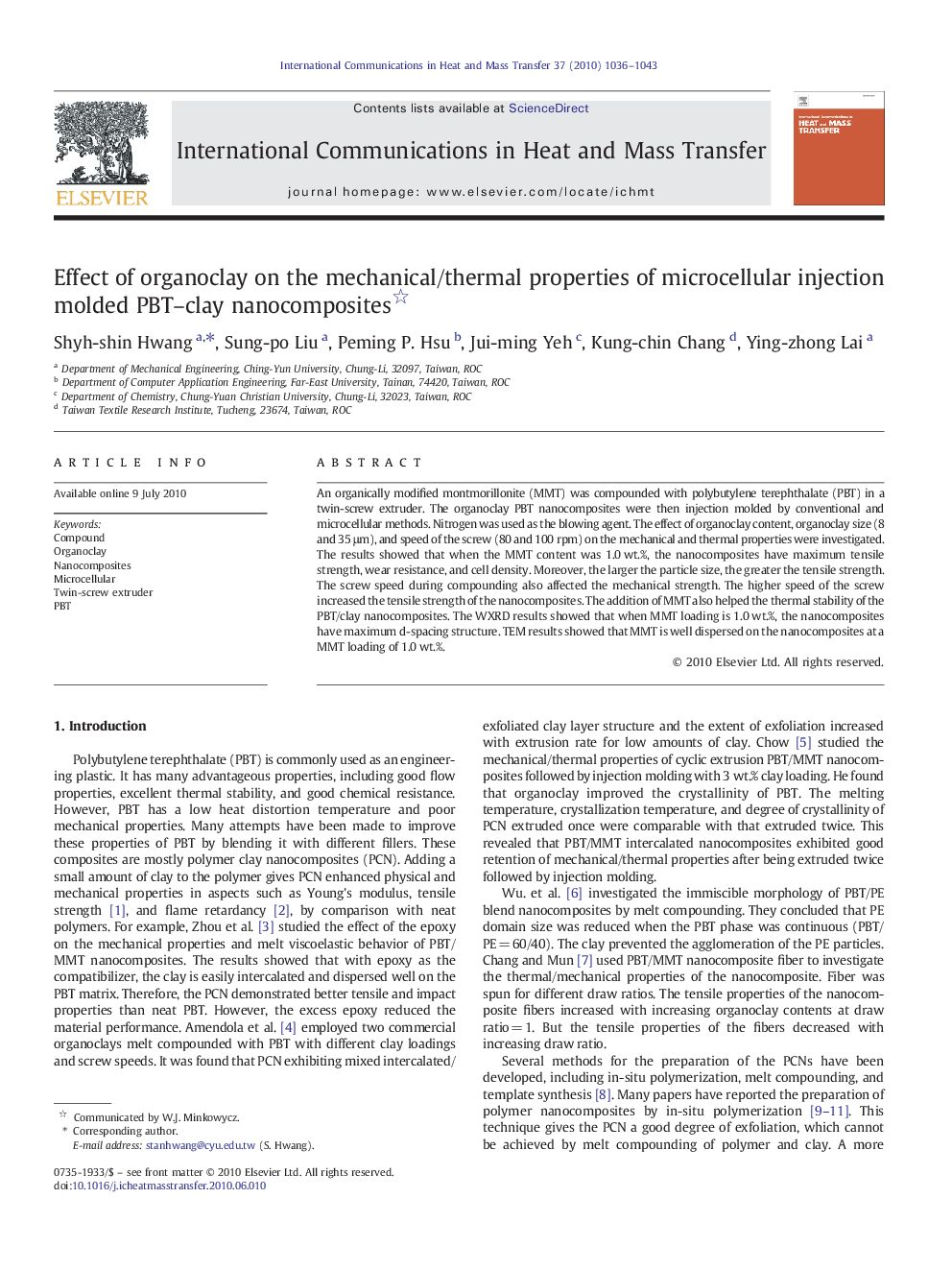| Article ID | Journal | Published Year | Pages | File Type |
|---|---|---|---|---|
| 653786 | International Communications in Heat and Mass Transfer | 2010 | 8 Pages |
An organically modified montmorillonite (MMT) was compounded with polybutylene terephthalate (PBT) in a twin-screw extruder. The organoclay PBT nanocomposites were then injection molded by conventional and microcellular methods. Nitrogen was used as the blowing agent. The effect of organoclay content, organoclay size (8 and 35 μm), and speed of the screw (80 and 100 rpm) on the mechanical and thermal properties were investigated.The results showed that when the MMT content was 1.0 wt.%, the nanocomposites have maximum tensile strength, wear resistance, and cell density. Moreover, the larger the particle size, the greater the tensile strength. The screw speed during compounding also affected the mechanical strength. The higher speed of the screw increased the tensile strength of the nanocomposites. The addition of MMT also helped the thermal stability of the PBT/clay nanocomposites. The WXRD results showed that when MMT loading is 1.0 wt.%, the nanocomposites have maximum d-spacing structure. TEM results showed that MMT is well dispersed on the nanocomposites at a MMT loading of 1.0 wt.%.
